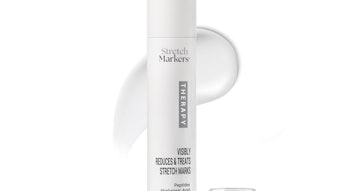
When it comes to the use of concentrates and oils in skin care, many questions arise from both estheticians and clients regarding their proper application, individual benefits and necessity. Questions frequently asked include, “What is the difference between a concentrate and a serum, and do I need both?” and “Can all skin types use oils, and when should I apply oils in my routine?” When incorporated correctly, oils and concentrates can powerfully target specific skin concerns. However, it is essential to identify the ingredients in oils and concentrates that specifically address your client’s unique skin type and conditions, and understand how to correctly layer these products in a routine. First, let’s look at the differences between each category to understand their individual necessity and why they are so potent.
Log in to view the full article
When it comes to the use of concentrates and oils in skin care, many questions arise from both estheticians and clients regarding their proper application, individual benefits and necessity. Questions frequently asked include, “What is the difference between a concentrate and a serum, and do I need both?” and “Can all skin types use oils, and when should I apply oils in my routine?” When incorporated correctly, oils and concentrates can powerfully target specific skin concerns. However, it is essential to identify the ingredients in oils and concentrates that specifically address your client’s unique skin type and conditions, and understand how to correctly layer these products in a routine. First, let’s look at the differences between each category to understand their individual necessity and why they are so potent.
Key Differences
Though oils and concentrates can both fall into the skin care category of treatments, meaning they are designed to target a specific skin condition, there are key differences to bear in mind when recommending them to clients.
Concentrates. As their name suggests, concentrates contain concentrated amounts of active ingredients to target specific skin concerns like hyperpigmentation, fine lines, devitalized skin and dehydration. While this description could make them seem identical to serums, concentrates are in a creamier, lipid-rich base that is more hydrating and nourishing than serums. This richer base makes them typically more enjoyed by normal to dry skin types, as oily-skinned clients would not prefer their rich texture, but there are more lightweight concentrates on the market that even the oiliest skin types can enjoy. Conversely, serums have a light gel or fluid consistency, making their texture enjoyable for all skin types, and they penetrate deepest into the skin to deliver their potent actives.
Oils. Oils are the richest products, high in concentration of beneficial, antioxidant-rich lipids that work to restore the skin’s barrier and seal in moisture. Though oils are not frequently seen as treatments that target skin conditions like aging and hyperpigmentation, there are oils on the market containing potent actives that target specific skin concerns like aging, hyperpigmentation and rosacea. A common misconception is that oils should not be used on oily or breakout-prone skin types; however, suitable oils can improve oily or breakout-prone skin by balancing sebum production, increasing hydration and soothing inflammation.
Why We Need Both
As previously stated, concentrates and oils contain a high concentration of active ingredients that target skin concerns. Since they both have these characteristics, you might wonder why we would use them together in a regimen. The answers lie in their solubility (water vs. oil), the additional purpose(s) they serve, and their ability to increase the effectiveness of skin care routines.
Concentrates have some water solubility, whereas oils do not, and this solubility allows concentrates to penetrate deeply into the skin to deliver their ingredients. If an oil is applied first, it impedes ingredients in other treatments from optimally penetrating the skin. While oils can also be formulated with active ingredients, their other function is acting as a topcoat that seals in hydration when applied after a moisturizer.
An additional reason to use both a concentrate and an oil, is the fact that most of our clients have more than one skin concern. Layering these steps, with concentrates applied after serums, and oils applied after moisturizers, allows treatment of multiple concerns and doubles up on beneficial actives, more effectively achieving desired results. Not using both in our daily routines means missing out on some of the most potent products in skin care, and in turn, optimal results. Explaining each of these points and differentiating each step’s purpose to clients is critical for them to understand the necessity and value of using them both. Many clients might have never heard of a concentrate, or perhaps haven’t considered incorporating an oil because they are blemish-prone. If we don’t provide this information and demonstrate these products’ ease of application, clients will frequently walk past them in the retail space due to intimidation or not perceiving them as valuable.
Choosing the Right Concentrate and Oil
Each skin type and condition has different needs, and it is imperative to recognize these needs to select the best concentrates and oils for your clients. Here are the best ingredients to look out for in oils and concentrates for each skin type and condition.
Normal skin. Normal skin types will benefit from oils and concentrates rich in many actives that target their skin concerns, with little need to be concerned about an adverse reaction. Those with normal skin types should incorporate key ingredients that prevent and treat aging like hyaluronic acid and vitamin C, that will maintain the skin’s appearance and protect from environmental stressors.
Combination skin. Combination skin should incorporate the suggested types of concentrates and oils in each area of the face and skin type that corresponds with recommended products. For example, most combination skin types have oily tendencies through the t-zone and should adhere to the recommended products for oily skin through those areas, while using concentrates and oils designed for dry or normal skin for other areas.
Dry skin.Dry skin produces less sebum and lacks moisture, resulting in a tight, flaky, or dull appearance. Richer concentrates are perfect for those with dry skin. Ingredients that protect and enhance the barrier function of the skin, such as ceramides and hyaluronic acid should be incorporated to address this skin type. For dry skin, look for oils containing more occlusive types of oils in their formulation, such as camellia and marula oil, which provide a thicker, more substantial texture that functions as a protective shield, preventing dehydration and ameliorating dryness in the skin, especially while you sleep.
Oily and acne-prone skin. Oily skin has overactive sebaceous glands that cause increased production of lipids, often resulting in larger pores, congestion, and potentially, acne. Ingredients in concentrates best suited for oily and acne-prone skin types include red clover, which is rich in phytoestrogens and nutrients that balance sebum production and increase cellular turnover rates to prevent congestion and breakouts. Additional actives include willow bark and zinc, which will also reduce the inflammation associated with acne.
When recommending oils and concentrates for clients with oily or acne-prone skin, look for products with ingredients that control oil production and balance the skin. Essential oils such as tea tree and clary sage kill negative microbes and balance hormones, while base oils made of lighter textured lipids, such as sesame and olive oil, contain linoleic acid. Linoleic is a fatty acid that is a critical, protective component of sebum that is involved in the protection and strength of the skin’s barrier.1
Skin with wrinkles and loss of elasticity.Revolutionary ingredients from fresh and saltwater algae sources such as blue-green algae that mimic retinoids, as well as brown and red algae that are proven to stimulate collagen and hyaluronic production, provide a smoothing, “filler-like” effect to the skin. Naturally sourced peptides from rice and sacha inchi also stimulate collagen and elastin production to lift the contours of the face and reduce wrinkles.
Though vitamin C isn’t typically associated with oils, there is a type of vitamin C that is oil soluble called tetrahexyldecyl ascorbate. This oil-soluble form of vitamin C, along with targeted botanicals like rosemary and milk thistle, target deeper causes of aging in the skin, such as glycation, which negatively affects dermal collagen and fat cell production that contributes to skin volume. By targeting these components, deep folds are treated and prevented in the skin. Additionally, this oil-soluble form of vitamin C is more stable than traditional vitamin C and provides maximum efficacy in treating deep free radical damage that contributes to the skin’s aging.
Sensitive and rosacea-prone skin.Those with sensitive and rosacea-prone skin require products that are gentle, free of artificial colors and fragrances, and often benefit from using natural, organic and biodynamic ingredients. Concentrates with ingredients like chamomile, cornflower and arnica will lend their beneficial properties to reduce the redness, irritation, reactivity and inflammation associated with sensitive and rosacea-prone skin. Essential oils from rosemary can also address the negative microbes, such as Demodex mites, associated with the symptoms of rosacea. Oils formulated with calendula and sea buckthorn contain phytonutrients and phytochemicals that protect and soothe the skin from common sources of irritation. Jojoba oil mimics sebum, and gently bolsters the skin’s protective barrier, making it less reactive to potential irritants that would typically cause reactions in sensitive and rosacea-prone skin.
An Invaluable Tool
Concentrates and oils are an invaluable tool in the treatment room and in clients’ home-care routines to prevent and treat a multitude of skin concerns. Educating clients about the benefits of incorporating concentrates and oils into their routines, along with how to correctly layer and apply them, will ensure their effectiveness in achieving maximum results. Addressing questions about these products’ necessity and benefits will also ensure clients realize the products’ immense potential to prevent and treat conditions. As consumers become more aware of the benefits of concentrates and oils, the products will continue to boom in popularity, so be sure to inform clients about these must-have products that help them achieve healthy, beautiful skin!
Brian Goodwin is an award-winning international educator for Éminence Organic Skin Care. As a master medical esthetician, master herbalist and consultant, Goodwin leverages over 10 years of spa industry experience to bring fun, engaging education to spa professionals around the world.










